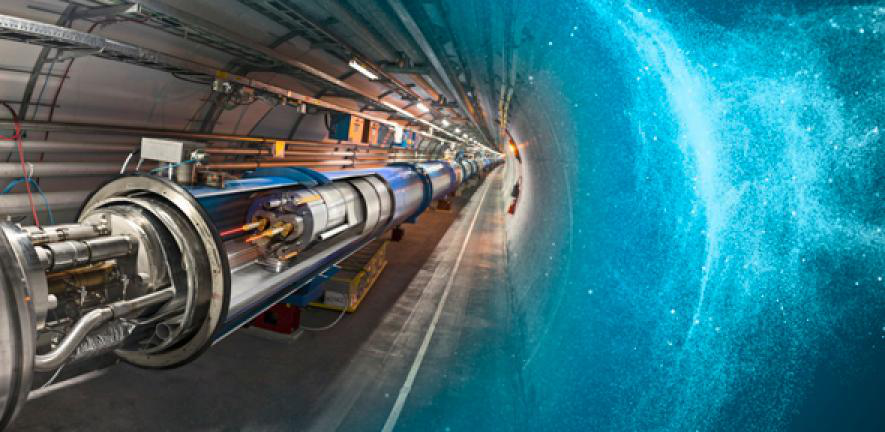Speaker
Description
From the discovery of the Higgs boson in 2012, most of its properties such as mass, spin, production cross-section and its coupling to fermions and bosons have been measured. However, the trilinear self-coupling $\lambda_{HHH}$ of the Higgs boson has not been measured yet. This parameter controls the shape of the Higgs potential, explaining the importance of its measurement. Deviation from its Standard Model (SM) predicted value would indicate new physics beyond the SM (BSM). Deviations are quantified through the $\kappa_{\lambda}$ modifier. At the LHC, it is measured through the rate of the rare Higgs boson pair production (HH) process, which is the only direct way to access it. This process is mainly produced at the LHC via gluon-gluon fusion (ggF) through destructive interference of two Feynman diagrams involving quark loops and the triple Higgs boson self-interaction. At the LHC centre-of-mass energy of 13 TeV, the cross-section of the Higgs boson pair production is $31.05_{-5.0\%}^{+2.2\%}$ fb as predicted by the SM. This low cross-section could be enhanced by the presence of BSM physics (non-resonant and resonant), thus the motivation to explore the search for the double Higgs production.
This presentation will focus on the search for the Higgs boson pair production in the two bottom quarks plus two photons final states with the 2015-2018 data recorded by the ATLAS detector recently published (https://arxiv.org/pdf/2112.11876.pdf). This search sets observed (expected) upper limits to the HH cross-section of 4.2 (5.7) times the SM expectation. The observed (expected) constrains on the Higgs boson trilinear modifier $\kappa_{\lambda}$ are determined to be [-1.5, 6.7] ([-2.4, 7.7]) at 95% confidence level. The search explores the resonant production of double Higgs ($pp\to X \to HH$) and sets limits on its cross-section as a function of the $m_{X}$. The observed (expected) limits on the cross-section of $pp\to X \to HH$ range from 610 fb to 47 fb (360 fb to 43 fb) over the constrained mass range.
In this presentation, both the search for the resonant and non-resonant double Higgs production will be detailed, in addition to a comparison with other searches f the Higgs pair production with other final states and using data collected between 2015-2016.

